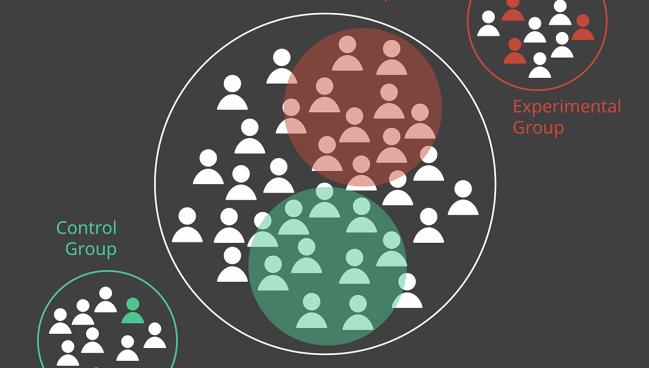A Sham-Controlled Trial of AF Ablation Is Feasible, but Is It Needed?
Although ORBITA-AF shows it can be done, and other trials are underway, not everyone is convinced it’s worth the effort.

Back when the CABANA trial first came out, failing to demonstrate that catheter ablation improves hard clinical outcomes in patients with atrial fibrillation (AF) over what can be achieved with medical therapy, some electrophysiologists were adamant: only a sham-controlled trial could definitively establish the benefits of the procedure.
Others, however, dismissed the idea, stating that it would be unethical given the mounting evidence, from secondary analyses of CABANA as well as other studies, of ablation’s positive effects on other endpoints.
Nevertheless, some researchers pushed ahead, and the results of the 20-patient ORBITA-AF feasibility study—published online last month in the American Heart Journal with lead author Vijayabharathy Kanthasamy, MBBS (Barts Heart Centre, Barts Health National Health Service Trust, London, England)—show that the sham-based design is possible. Patients remained effectively blinded to whether they underwent ablation using a modified version of the procedure used in the original ORBITA trial of PCI in patients with stable angina.
Indeed, the challenges of performing such studies of AF ablation are not as great as some might presume, said Nikolaos Dagres, MD (Deutsches Herzzentrum der Charité, Berlin, Germany), one of the coordinating investigators for another ongoing sham-controlled trial of ablation, called PVI-SHAM-AF. Once their trial was underway, for instance, the resistance to the idea was less than the research team thought it would be, both among referring physicians and their patients.
“Of course, we are not talking about surgery for cancer, or something like that. We are talking about a procedure with a mainly symptomatic endpoint where what you want to do with the procedure is in most cases reduce symptoms and improve quality of life, so subjective endpoints,” Dagres said. “Doctors and patients are not as reluctant to participate as one would have thought.”
Even though a larger follow-up study of ORBITA-AF is in the works and other sham-controlled trials of AF ablation are underway, whether these studies are really worth the effort continues to be debated.
For Malcolm Finlay, BMBCh, PhD (Barts Heart Centre, Barts Health National Health Service Trust), senior author of the ORBITA-AF paper, there is value in pursuing this line of research.
“We should always look to test our assumptions, and although we may believe something works, it’s up to us, if we’re performing high-value and complex procedures on patients, to prove that they’re really worthwhile,” for both patients and the cardiology community, he told TCTMD.
Although we may believe something works, it’s up to us, if we’re performing high-value and complex procedures on patients, to prove that they’re really worthwhile. Malcolm Finlay
Matthew Reynolds, MD (Lahey Hospital & Medical Center, Burlington, MA), on the other hand, remained skeptical. He drew a parallel to the ORBITA-2 trial, which confirmed some findings that most interventional cardiologists already believed—that there is a placebo effect from invasive procedures that sham-controlled trials can help quantify and that, in the case of PCI, there is a therapeutic effect on symptoms and quality of life above and beyond the placebo effect.
It'll likely be a similar story with catheter ablation, Reynolds predicted, noting that ablation has been performed for about 25 years and is strongly recommended in practice guidelines. As such, a sham-controlled trial is not a high research priority, he said. “I’m not sure how that helps the field. I’m not sure if it’s really worth investment of a lot of resources to go and prove that.”
The Need for a Sham Control
Finlay said his team had started to mull the need for a sham-controlled trial of AF ablation after realizing that there were a lot of people in the medical community who were not convinced the procedure was better than treating patients with persistent AF with cardioversion plus medical therapy to restore sinus rhythm. A sham-controlled trial could help change that mindset.
Dagres said there is a great need for such studies for interventions, particularly when the outcome is a subjective endpoint like quality of life or symptom relief. The main guideline indication for AF ablation, he noted, is symptom relief.
Many studies have indicated that AF ablation reduces symptoms and the burden of AF compared with antiarrhythmic drugs or conservative therapy, “but one does not know without a sham-controlled trial which is the true effect of the procedure itself and which is, for instance, explained by a placebo effect,” Dagres said. “Catheter ablation is a procedure that is applied thousands of times, so one needs to have firm knowledge and firm insights into the effect of the ablation procedure.”
Ayman Hussein, MD (Cleveland Clinic, OH), provided a nuanced answer when asked about whether there is a need for a definitive, sham-controlled trial of AF ablation. “The clinical endpoints of most these clinical trials were simply arrhythmia recurrence, so it’s more of an objective electrical assessment that wouldn’t necessarily be affected by a simple placebo effect,” he said. “As such, when it comes down to the standard outcomes of ablation . . . a simple loop-monitor implant can address that without the need for a sham intervention.”
He acknowledged that “when it comes down to quality-of-life assessment, yes there could be a placebo effect and a sham intervention has some value in that space.” But, he added, although some of the improvements in quality of life that have been observed in prior studies could be due to a placebo effect, concurrent reductions in AF burden recorded objectively suggest the benefit cannot be fully explained by the placebo effect.
“The ultimate way to control for an intervention is usually to do a sham, but if we were to focus on pure electrical endpoints there wouldn’t be much value to doing a sham intervention,” Hussein said.
The Challenges of Sham Control
Finlay said there were some obstacles to getting ORBITA-AF off the ground, including a thought that patients wouldn’t go for it and possible concerns among cardiologists about what a negative result would mean. People were asking, he said, “what if it doesn’t work? Does that mean the end of AF ablation?”
Moreover, how to make sure patients remained blinded to whether they were treated with ablation took some thought, as it was believed it might be unethical to not treat patients with anything in the control arm of the trial.
To overcome that last obstacle, the ORBITA-AF investigators decided to give everyone in the study cardioversion and then randomize them to pulmonary vein isolation (PVI) on top of that or not. They also included only patients with early persistent AF, who are typically directed to PVI plus cardioversion or cardioversion alone depending on where they’re treated. To help maintain blinding, every patient had a femoral sheath placed under deep sedation.
Also easing ethical concerns, patients included in the pilot study received better than usual care, with a much shorter wait time to undergo the procedure, placement of an implantable loop recorder to monitor for arrhythmia recurrence, and careful follow-up from the research team, Finlay said, noting that all of those features likely helped overcome any hesitancy patients and their physicians might have had about participating in the trial.
Another key feature that likely played into the ability to conduct ORBITA-AF is that early crossover was allowed (patients in the cardioversion-only arm were offered ablation if a recurrence of persistent AF was documented), Reynolds said. If that’s built into protocols for trials, he added, then many clinicians wouldn’t have a problem referring patients.
But that crossover—which occurred in six of the 10 patients assigned to cardioversion plus the sham procedure in ORBITA-AF—may create additional issues by shortening the time frame for observation and complicate interpretation of the results, Reynolds said.
When it comes down to quality-of-life assessment, yes there could be a placebo effect and a sham intervention has some value in that space. Ayman Hussein
That’s important in the context of AF, which is a chronic condition. Quantifying the placebo effect over the short term doesn’t necessarily help guide decisions about the long-term management of these patients, Reynolds said. The results are “going to be interesting scientifically to some people, but I think clinically I just don’t see this being very valuable.”
Another issue, according to both Reynolds and Hussein, is that physicians and patients in the US are probably less likely to want to participate in a sham-controlled of AF ablation. Reynolds cited a different expectation of the healthcare system among patients in the US, where the demand for AF ablation has risen dramatically in recent years.
Hussein noted that one of his colleagues at the Cleveland Clinic, Oussama Wazni, MD, is overseeing a new trial of pulsed-field ablation as a first-line treatment for persistent AF, called AVANT GUARD, with the comparator being antiarrhythmic drugs and not a sham procedure. Every patient will receive a loop monitor to provide objective measurements of arrhythmia recurrence and AF burden. In that case, a sham procedure was not seen as necessary, and could even have added some risks, Hussein said.
More Sham-Controlled Trials Are Coming
For those who are skeptical about whether it’s possible to do a sham-controlled trial of AF ablation, ORBITA-AF should convince them, Finlay said. “I guess that’s the main point of this study: that it is possible to do a blinded, placebo-controlled study in an interventional electrophysiology setting.”
For those who still question whether it’s necessary, that’s another story. Finlay and his team believe PVI is beneficial for patients with persistent AF, but the evidence to support that belief is “frankly thin,” he said. “That hasn’t been tested that many times against a true control group.”
ORBITA-AF suggested that ablation lessens the recurrence of persistent AF, reduces the rate of repeat procedures, and improves quality life compared with cardioversion alone, although physicians speaking with TCTMD indicated that one can’t read too much into the results of a 20-patient pilot study.
“These properly controlled, randomized, blinded studies are needed to give a true effect size, and it’s quite possible that we have been underselling AF ablation so far,” Finlay said. “But the good thing about a blinded study, a randomized study, is it will hopefully show us the truth.”
Finlay said the investigators hope to start enrolling patients into the follow-up ORBITA-AF trial, which will be about 10 times as large as the pilot study and will be funded by Medtronic, in the second quarter of 2024.
In addition, PVI-SHAM-AF continues in Germany, along with SHAM-PVI in the UK and PFA-Sham in Czechia.
Whether the results of these trials will have an impact on clinical practice remains to be seen, as it depends on what the results show and the scientific discussions that follow, which can take some time, Dagres said. He noted that it’ll be about 2 years until the results of PVI-SHAM-AF are known.
In the meantime, physicians “should be open to the concept” of sham-controlled trials of AF ablation, Dagres said. “Physicians who may have an interest in participating in such trials, they should be open. These trials are feasible, and inclusion of patients is feasible.”
Todd Neale is the Associate News Editor for TCTMD and a Senior Medical Journalist. He got his start in journalism at …
Read Full BioSources
Kanthasamy V, Schilling R, Zongo O, et al. Feasibility of double-blinded, placebo-controlled interventional study for assessing catheter ablation efficacy in persistent atrial fibrillation: insights from the ORBITA AF feasibility study. Am Heart J. 2023;Epub ahead of print.
Disclosures
- The study was funded by a research grant from Barts Charity. Medtronic donated implantable loop recorders.
- Finlay reports having received research support from Abbott and being chief medical officer, founder, and shareholder of Echopoint Medical Ltd.
- Reynolds reports consulting for Medtronic on topics mostly unrelated to AF ablation.
- Hussein reports receiving research grants from Boston Scientific.
- Kanthasamy reports no relevant conflicts of interest.





Comments